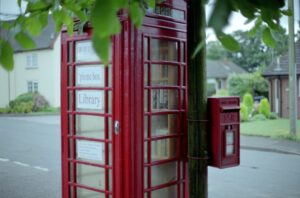Once you have ordered your leased line service, Openreach will be requested to complete an initial site survey to understand the work required to connect your site through to the local BT PoP. At this point in the order journey, you are able to cancel the order if the site survey shows significant work is required which might delay your order and subsequently add cost to your leased line.
The site survey will also determine whether or not any requested diversity options are deliverable. For example, if you have ordered Secure Plus (which provides dual tail circuits and diverse PoP locations), Openreach will need to check the feasibility of delivering the required solution. In some instances, there could be road closures required, or it may actually be impossible to deliver the separation required.
Depending on where you are located, there could even be waterways or motorways which stop your circuit from progressing quickly. Whatever the results of your survey, BT will work to plan your circuit path and routing to ensure quick installation of the service. In conclusion, the initial site survey is an essential component of the BT leased line installation process. It aims to ascertain the project’s feasibility, pinpoint potential hurdles, and gather vital information for planning and carrying out the installation.
Planning Permissions and Wayleave Agreements
The typical reasons for planning and wayleave requirements are when the laying of cables is required across any area which demands a structural alteration. For example, where permission is required for the installation of poles, masts or other structural alterations to listed buildings. There are numerous guidelines here, including ensuring there is no negative impact on the environment.
The biggest delays typically occur when a landlord is required to sign wayleave agreements to begin work – there is often a need to adjust legal terms and conditions, and the landlord will want to consider the implications.
Importance of obtaining planning permissions and wayleave agreements, if needed, before installation can proceed.
Openreach will apply for the relevant planning permission before any work to physically install the leased line can take place. This planning process is critical to move forward as soon as possible to avoid significant delays caused by planning compliance and disputes or generally by not completing paperwork. Although the process is not controlled by the customer, speaking to your landlord will help to alleviate any concerns.
Civil Engineering Work
Civil works can include digging trenches to contain cabling and fibre-optic lines. Applying for the relevant permissions to excavate pavements, roads, and even private land can be problematic and time-consuming. Once the permission is granted, civil work can also take time to organise and plan, with delays often caused by other issues which may occur, such as burst water mains.
Fibre-optic cables are pulled or blown through existing ducts connecting the BT exchange to the customer premises. Adding a second circuit for diversity and resilience can be time-consuming, as to ensure diversity, cabling may be required across poles or additional routes are often created depending on whether or not the customer is willing to pay excess construction charges. The splicing of existing fibre to new fibre is also required, but the extent of this work will be outlined within the site survey process.
The end goal is to connect an ONT (Optical Network Terminal) within the customer business, which is the final point in the process.
Customer Premises Equipment (CPE) Installation
The decision on which router to use is dependent on bandwidth (throughput) and features (security and Wi-Fi). BT offers standard Cisco routers alongside the more feature-rich Cisco Meraki devices. Configuration of the devices is undertaken by the BT installation team based on the initial required setup. Customers choose Meraki because of the inbuilt Wi-Fi together with endpoint threat protection, virus scanning, and web content filtering. The initial setup will also include any IP addressing and any other configuration options.
Circuit Configuration and Testing
Prior to handing over customer leased lines (including IP address assignment), BT support engineers will conduct handover tests which include bit error rate testing, latency measurements, and throughput of IP packets. There is internal work which will need to be completed, including configuration of routing protocols to propagate your network through to the Internet.
Security and Firewall Implementation
Intrusion Prevention Systems (IPS) are another critical security option that identifies and prevents malicious activities that may exploit vulnerabilities in your network. BTnet and Meraki offer network-based IPS and host-based IPS to detect and block threats, which includes malware and viruses.
Both BTnet and Meraki offer easy installation and configuration of these options via user-friendly interfaces, allowing even those with limited technical knowledge to set up their security system efficiently.
Ongoing Support and Maintenance
The ongoing support and maintenance of BT leased lines are completed under the following tasks:
Monitoring
BTnet offers some basic bandwidth monitoring tools when using the standard Cisco Managed CPE. For further enhanced reporting options, the customer should upgrade to Meraki, which offers granular bandwidth measurements in addition to latency and packet loss.
Troubleshooting
Whenever an issue arises, BT engineers are responsible for diagnosing and resolving issues as quickly as possible. This might include addressing hardware failures, software bugs, or connectivity problems, which are all defined within the BT SLA.
Upgrading
As businesses use more bandwidth over time, upgrading BTnet is completed by submitting a modify order. BTnet is provisioned by Openreach using 1Gbps circuits, so unless the
Capacity planning
Regularly assessing the bandwidth requirements of a business helps to determine if the leased line’s capacity needs to be increased or decreased. This ensures that the business has sufficient bandwidth to support its operations without overspending on unnecessary resources.
Backup and disaster recovery
Establishing backup systems and disaster recovery plans are vital tasks to minimise data loss and downtime in the event of a system failure or natural disaster.
Performance optimisation
Maintenance teams work continuously to optimise the performance of BT leased lines, which may include fine-tuning settings or upgrading hardware and software components to maintain optimal performance and ensure customer satisfaction.


